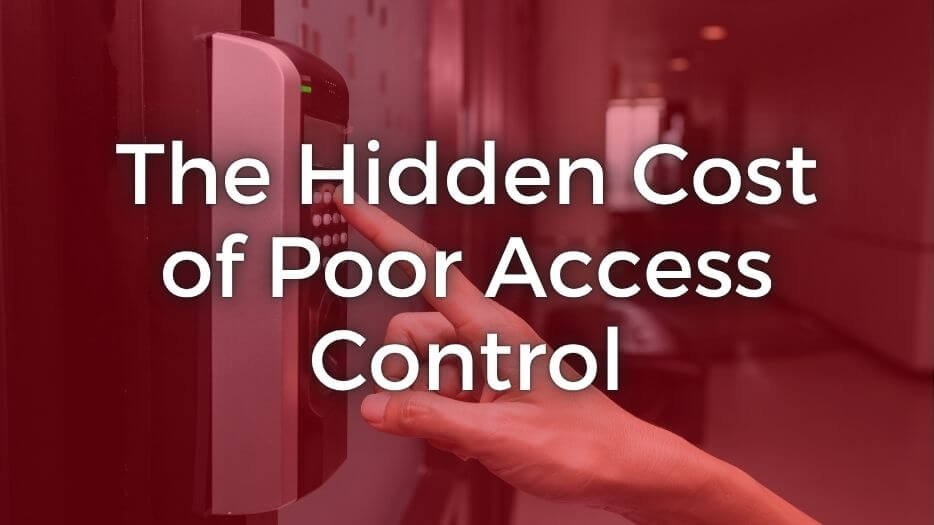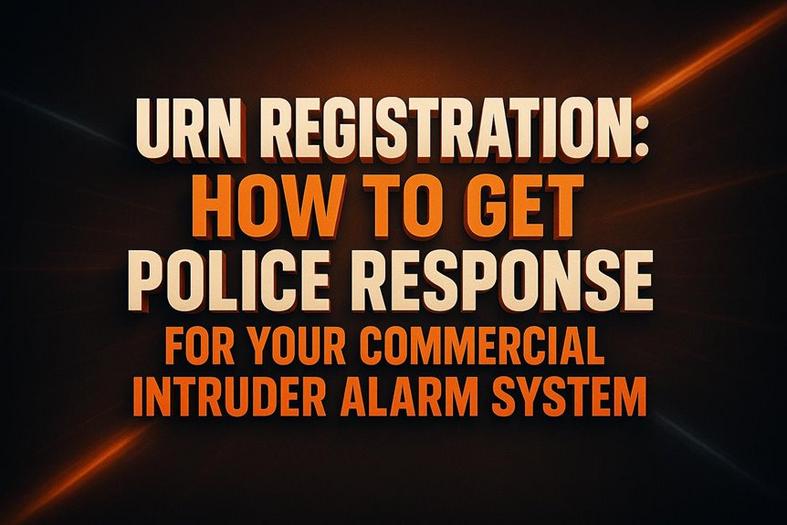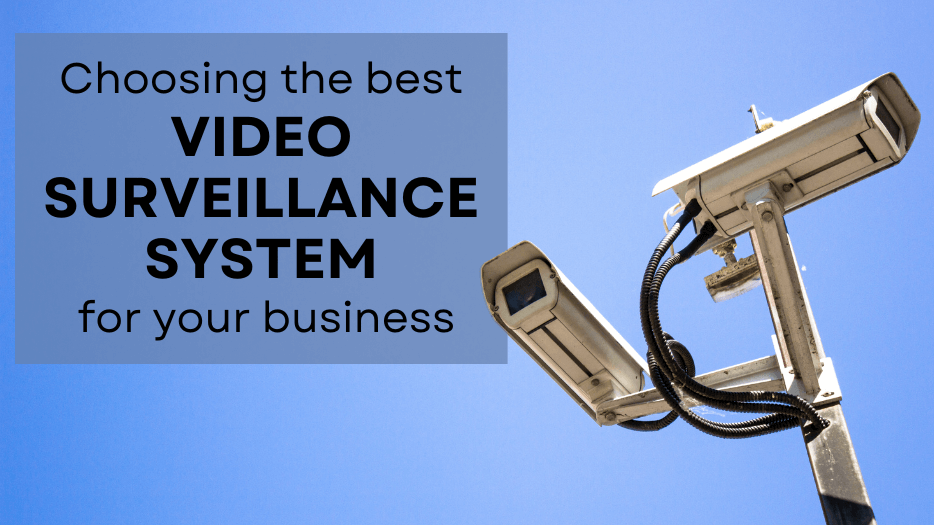Access control shouldn’t be an afterthought. Yet for many businesses, it’s exactly that – a system that’s been bolted on, patched up, or left to limp along because “it works… sort of.”
But here’s the thing: poor access control isn’t just inconvenient. It costs your business time, money and sometimes even its reputation. And those costs? They’re often hiding in plain sight.
Let’s explore how ineffective access control quietly undermines your business – and how upgrading it can be simpler (and more valuable) than you might think.
The Real-World Costs of Poor Access Control
When access control systems are outdated or poorly managed, problems creep in. Not necessarily all at once – but gradually, persistently and expensively. Downtime and disruption from lost keys, shared fobs and forgotten codes leave staff locked out and frustrated, or worse – let unauthorised individuals in. Without the ability to track entry, you face a serious challenge if theft, damage or compliance investigations occur. Productivity takes a hit too, as your team spends time chasing access or navigating clunky, manual systems. Older systems are often easier to bypass and provide little in the way of alerts or fail-safes, increasing security gaps. Non-compliance with fire safety or data handling regulations can lead to fines or reputational damage. And above all, the cumulative stress of dealing with all this wears down the people managing it day-to-day.
Additionally, the cost of constant maintenance or emergency call-outs to fix access-related problems adds up quickly. Whether it’s replacing lost keys, reprogramming entry points or chasing missing audit trails, every reactive task drains both time and budget. For larger sites with multiple entry points or rotating staff rosters, the admin overhead alone can become a full-time job. Even for smaller businesses, it’s a consistent distraction – one that undermines focus and interrupts smoother operations.
Spotting the Warning Signs
There are some clear indicators that your access control system isn’t pulling its weight. If your team is still managing access with physical keys – and no one is quite sure who holds which – or if entry relies on shared fobs or access codes that never change, it’s time to reassess. You might not have digital logs of who went where and when, or you’re struggling to restrict access to sensitive areas like server rooms or stock areas. Lost fobs might be a regular headache, and in some cases, your system may be running on outdated, unsupported hardware or software. Add in any recent security incidents – or close calls – and you’ve got all the signs of a system overdue for replacement.
Another subtle clue is when staff start finding workarounds – such as propping doors open or passing fobs between colleagues – because the system is too rigid or unreliable. These workarounds, whilst well-intentioned, undermine the very point of having access control in the first place. They introduce security risks and often go unnoticed until something goes wrong. In some cases, these behaviours also increase your liability in the eyes of insurers or regulators.
What Modern Access Control Looks Like
Access control has evolved – fast. Today’s systems offer smart, secure and user-friendly solutions, often using mobile credentials, biometric authentication, or programmable fobs. You can assign custom permissions, track real-time activity and manage access remotely from cloud-based platforms. Integration with other security systems, like CCTV or intruder alarms, ensures comprehensive protection. And crucially, you can phase upgrades in over time, minimising disruption whilst keeping security front and centre.
Modern systems are also more responsive to how people work today. Hybrid work, flexible schedules and multiple contractors all demand a system that allows quick updates to access privileges. Temporary passes, scheduled entry permissions and instant revocation all help reduce risk whilst maintaining operational flexibility. And because everything is logged automatically, audits become less stressful and far more accurate.
The Standards That Matter
When upgrading or installing access control, it’s not just about the kit. It’s about compliance. Several key standards and regulations must guide your decisions. BS EN 60839 defines performance and design standards for electronic access control systems. Any system that logs user data must also comply with GDPR and the Data Protection Act 2018. Fire safety regulations require access systems to fail-safe in emergencies and not hinder evacuation. And finally, NSI or SSAIB certification ensures you’re working with installers who follow best practice in design, installation and maintenance – so you don’t have to second-guess the system’s reliability. As a fully accredited provider, we follow these best practices in every installation we undertake.
Compliance isn’t a box-ticking exercise either. For insurers, proving you have the right systems in place – and that they’ve been correctly installed and maintained – can have a real impact on your premiums. For larger premises, or those with high-value stock or sensitive information, many insurers often insist on specific standards. Meeting these from the outset makes renewals easier and reduces the chance of claims being denied due to inadequate security infrastructure.
How to Upgrade Without the Headaches
Worried that upgrading your access control will mean weeks of disruption and confusion? It doesn’t have to. Here’s how we manage the process:
- Site Survey: We assess your current system, security risks and staff movement patterns.
- Tailored Design: We select access control points and permissions based on your needs, not off-the-shelf assumptions.
We design systems to meet compliance requirements and plan installations around your operations to minimise downtime. Your staff receive straightforward training to ensure the system is used correctly and confidently. And with our ongoing support in place, the result is a secure, efficient and compliant system that works as hard as your business does – without constant tinkering or stress.
Upgrades can often be phased, especially on larger sites. This means you can start with the most critical entry points or areas and roll out new infrastructure gradually, with minimal operational impact. We’ll help you create a roadmap that spreads out costs and avoids overwhelming your internal teams. And once the new system is up and running, the reduction in support calls and admin hassle often pays for itself within months.
Before You Go…
If you’re still dealing with poor access control – keys going missing, people getting locked out, permissions that are hard to manage – then it’s time to consider what it’s really costing you.
And more importantly, how much smoother life could be with a reliable, compliant, modern system that just works.
Upgrade Your Access Control Without the Drama
Contact us to discuss upgrading your access control. As accredited installers, we’ll conduct a thorough site survey and design a system tailored to your business needs. Whether you need a full system overhaul or a simple phased upgrade, you’ll get the support, compliance and confidence you need to keep things secure… and straightforward.
Because when access control is done right, it’s one less thing for your Responsible Person to worry about.










